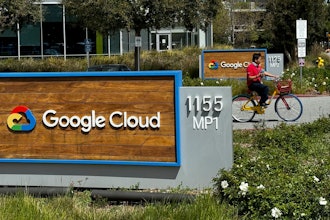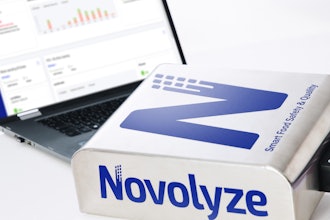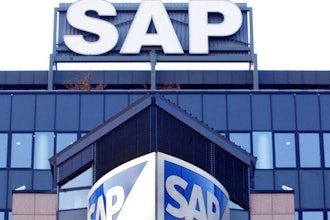Many organizations are operating with a ‘cloud first’ mandate. Business and IT leaders are prioritizing the transition to software-as-a-service and embarking on new cloud technology initiatives. In fact, Gartner says that more than $1 trillion in IT spending will be directly or indirectly affected by the shift to the cloud by 2020.
The quality sector — an area that has lacked software innovation for two decades — is no different. Ineffective quality management can have significant business cost impacts. As a result, organizations are replacing paper-based processes and outdated legacy quality systems with modern, cloud solutions to improve productivity and reduce quality risks.
However, many quality management solutions masquerading as “cloud” aren’t truly cloud. In actuality, these solutions are the same old on-premise software systems but just hosted off premise. In other words, these systems are online versions of legacy software and therefore do not deliver all of the highly touted benefits of the cloud.
What’s the difference?
The defining attribute of a true cloud solution is multitenancy. Multitenancy enables the secure deployment of only one version of cloud software to all customers and quick, ongoing innovation that minimizes IT burden. In contrast, hosted online systems require vendors to maintain multiple versions of software, resulting in a substandard product with infrequent upgrades that are time-consuming for customers to implement.
For organizations transitioning to the cloud, here are five characteristics of a modern, multitenant cloud solution that address today’s needs for quality in manufacturing.
No. 1 - Complete: Everything in a Single System
Siloed legacy systems require users to toggle between several disconnected modules. And limited integration prevents visibility across business processes. The cloud brings together multiple solutions such as QMS and document management on a single unified suite for improved control, visibility, partner collaboration and, ultimately, better quality outcomes.
“We’ve been able to harmonize globally on a single system so that processes and document templates can be standardized,” said Cara Weyker, vice president of CMC Regulatory and Quality at Horizon Pharma. “This reduces the risk of making errors or duplicating efforts.”
No. 2 - Inclusive: Collaborate Securely with External Stakeholders
A multitenant cloud application meets the most stringent requirements for secure collaboration. Organizations can bring external stakeholders into internal business processes easily and securely to reduce manual efforts and improve collaboration. Since many hosted cloud solutions are merely instances of legacy software hosted in the cloud, the same issues with secure collaboration persist. A multitenant cloud solution gives any authorized user access from any device, at any time, from anywhere.
James Huang, director of Global Quality Systems at Atrium Innovations, recognized the value of including all stakeholders into quality processes with a unified quality management system (QMS) and document control solution in the cloud. “We’ve created a more integrated approach to bring all the parties globally together,” said Huang. “When we make changes, all parties will be involved so we can collaboratively solve the problem. The technology will provide the opportunity to harmonize different business processes.”
No. 3 - Innovative: Keep Pace as the Business Scales
With on-premise technology, the security cost, risk and accountability is shouldered by each individual customer. With a multitenant cloud solution, the burden is shouldered by a cloud company that is continually making ongoing investments to deliver multiple annual updates to keep up with new regulations and industry best practices. This reduces the burden on IT and allows them to focus on fine tuning the quality application and aligning business areas.
Kevin Loftus, quality assurance manager at Medicines360, was impressed with the rapid implementation possible with a multitenant cloud application. “As a small company, we thought moving to a new system would be a year-long project,” said Loftus. “Instead, it was only four weeks to get the system up and running with our configuration, including workflows. It took only another four weeks to have 80% of our quality management documents fully migrated.”
No. 4 - Intuitive: Ease-of-use Drives Adoption, Efficiency
User experience is starkly different between multitenant cloud applications and legacy systems.
Loftus observed significant efficiency gains with a multitenant cloud application. “In terms of managing our document lifecycle and taking documents from draft through review, revision, approval, issuance and training, we have been more productive in the last six months than the entire year before,” said Loftus.
Simplifying the user experience not only increases efficiency, but also compels users to consistently work within the system. This was the case at Conatus Pharmaceuticals. “Simplicity not only makes us more productive and efficient, but also encourages users to leverage the full functionality of the system, which improves our return on investment,” explained Steve Mento, CEO of Conatus Pharmaceuticals.
No. 5 - Visibility: Make Decisions with Real-time Data
With a unified quality management system in the cloud, users can easily view real-time status of activities and conduct ongoing analysis to identify areas for improvement. This capability shifts an organization from reactive to proactive and can positively impact business areas beyond quality.
Increased visibility was a significant contributor to Horizon’s strategic value. “We run reports on a wide range of document life cycle metrics across the enterprise, and are now able to anticipate potential bottlenecks or compliance risk well in advance,” added Weyker.
Ready for a True Cloud Solution?
The transition to cloud will continue to gain significant momentum. With many cloud options available, it can be difficult to decide which path to take. But as many organizations are realizing, a true, multitenant cloud solution can deliver significant benefits.
“I knew we had to move to the cloud to optimize our resources. When we started our search, I wasn’t sure we could find a solution that would not require significant customization,” said Loftus at Medicines360. He soon learned that the cloud could give him the specialized functionality he needed in an interface that’s easy to use for end users and administrators. “It saves considerable time and resources.”
Sophia Finn is director of Vault QualityOne Strategy.























